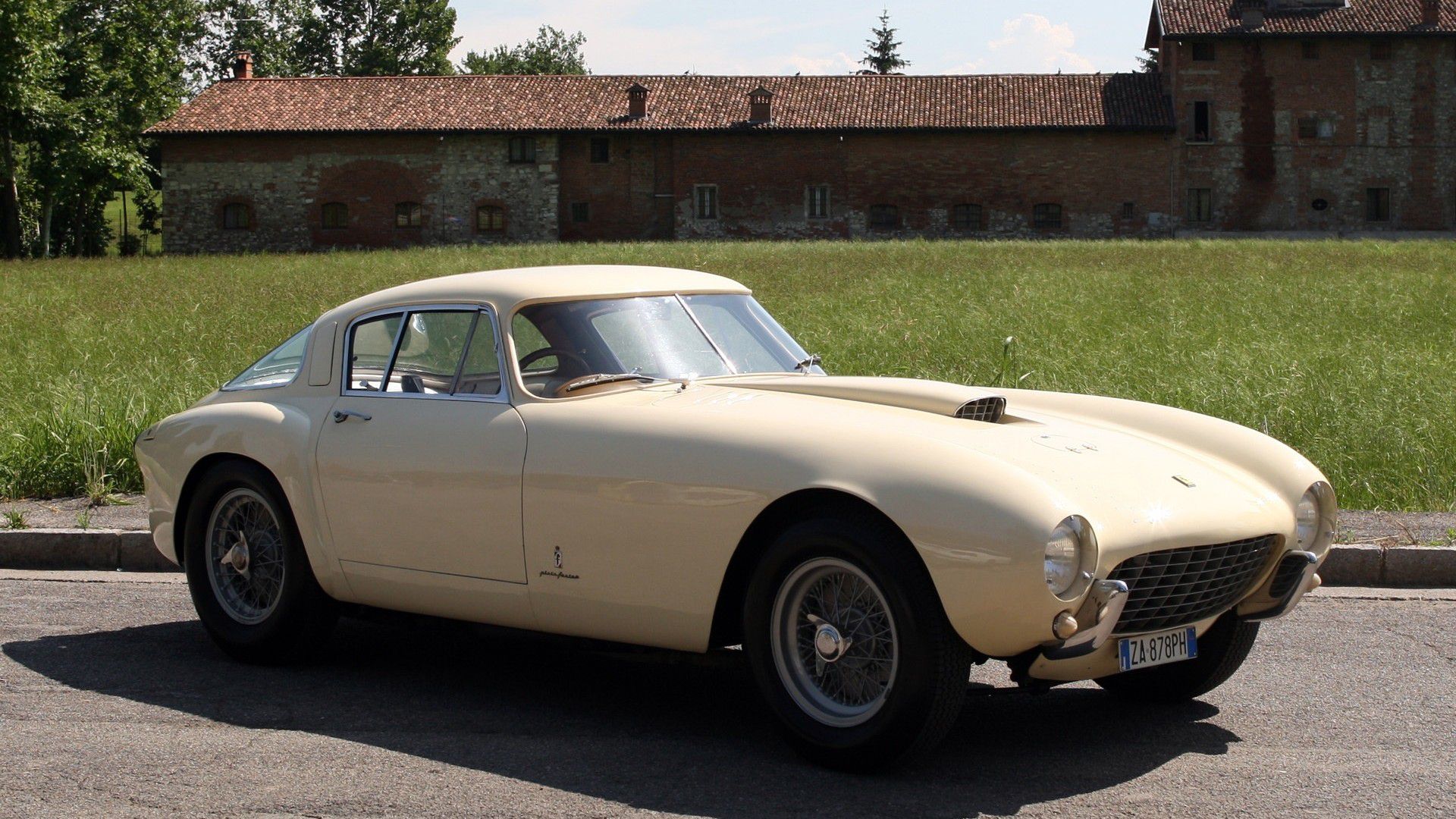Ferrari Pinin
The Ferrari Pinin was developed by Pininfarina prototype for a four-door sedan version of the Italian car manufacturer Ferrari. The Pinin was built in 1980 as a single piece.
The initiative for this project fell to Sergio Pininfarina, who had long dreamed of an Italian competitor for luxury-class sedans like the Jaguar XJ, the (designed by Giugiaro) Maserati Quattroporte or Mercedes 450 SEL 6.9 to design.
The design of the Pinin was designed by Pininfarina designer Leonardo Fioravanti; Detail work completed Diego Ottina. Fioravanti had already been involved in the design of the Fiat 130 Coupé and the Ferrari 365 GT4 2 +2. His Ferrari sedan in the tradition of these designs. She showed a smooth-faced range with highly uplifting passenger compartment. The side windows were performed on the vehicle column. This resulted in a feeling generous glazing. A double accent line ran a short distance to the belt line of the car front to rear. The recessed door handles and door locks were integrated into the bead. Pininfarina took up this style element later in his designs for the Alfa Romeo 164 and the Peugeot 605 in intensified form again. The headlights were behind a glass cover; including broad indicators and also glazed front fog lamps were arranged. The large, barred in the Ferrari-style grille broke through the front bumper and handed down to the front spoiler. This front design took over Opel for the second series of the senator. The tail lights, which were made by Carello, were largely glazed white. Only when activated illuminated individual parts colored. This element was found half a decade later in which was also designed by Pininfarina Cadillac Allanté again.
The Pinin followed the usual drive concept with a front engine and rear wheel drive. The drive unit of the 5-liter V12 engine from the 512 flat BB was provided, the low height allowed for a low front end. The transmission should be, following the transaxle design are located on the rear axle.
The interior was a large area equipped with leather. Instead of a dashboard wore the Pinin a flat screen on which the essential information were displayed digitally. The system should be developed by Ferrari in collaboration with Borletti. Fioravanti attacked here on the concept of the Aston Martin Lagonda S2. Left and right of the screen there were satellite operation with pressure switches.
Pininfarina presented a non-drivable prototype of the Pinin ago. The silver-painted car had a tobacco-colored leather interior and used a five-speed manual gearbox from Ferrari.
The car was unveiled at the Turin Auto Show the public in 1980 and created quite a stir. Following the exhibition, the car was brought into the United States, where it was issued on several occasions to investigate the customer interest on.
2008 acquired a private buyer the prototype of the Pinin. He commissioned the former Ferrari engineer Mauro Forghieri trying to make the car roadworthy. Forghieris design office Oral Engineering designed the drivetrain, electrics and accessories such as the tank. When driving the twelve-cylinder flat engine was used, the Pininfarina had initially planned. In March 2011, the Pinin was moving under its own power for the first time.
Early 1981, Enzo Ferrari decided not to series production of the Pinin. The main reason for this was Leonardo Fioravanti’s view, doubt, produce such a car with the required quality: "If Ferrari produced a two-door, then was sporting the essential criterion, and in this regard, one could forgive the occasional lack of quality. But the quality level for four-door model is different from that for two-door. With the Pinin we would compete against BMW, Mercedes and Rolls-Royce! ". Quality defects would quickly destroy the reputation of the Pinin. Ultimately, Ferrari wanted not to take this risk. The Pinin was a unique piece.
